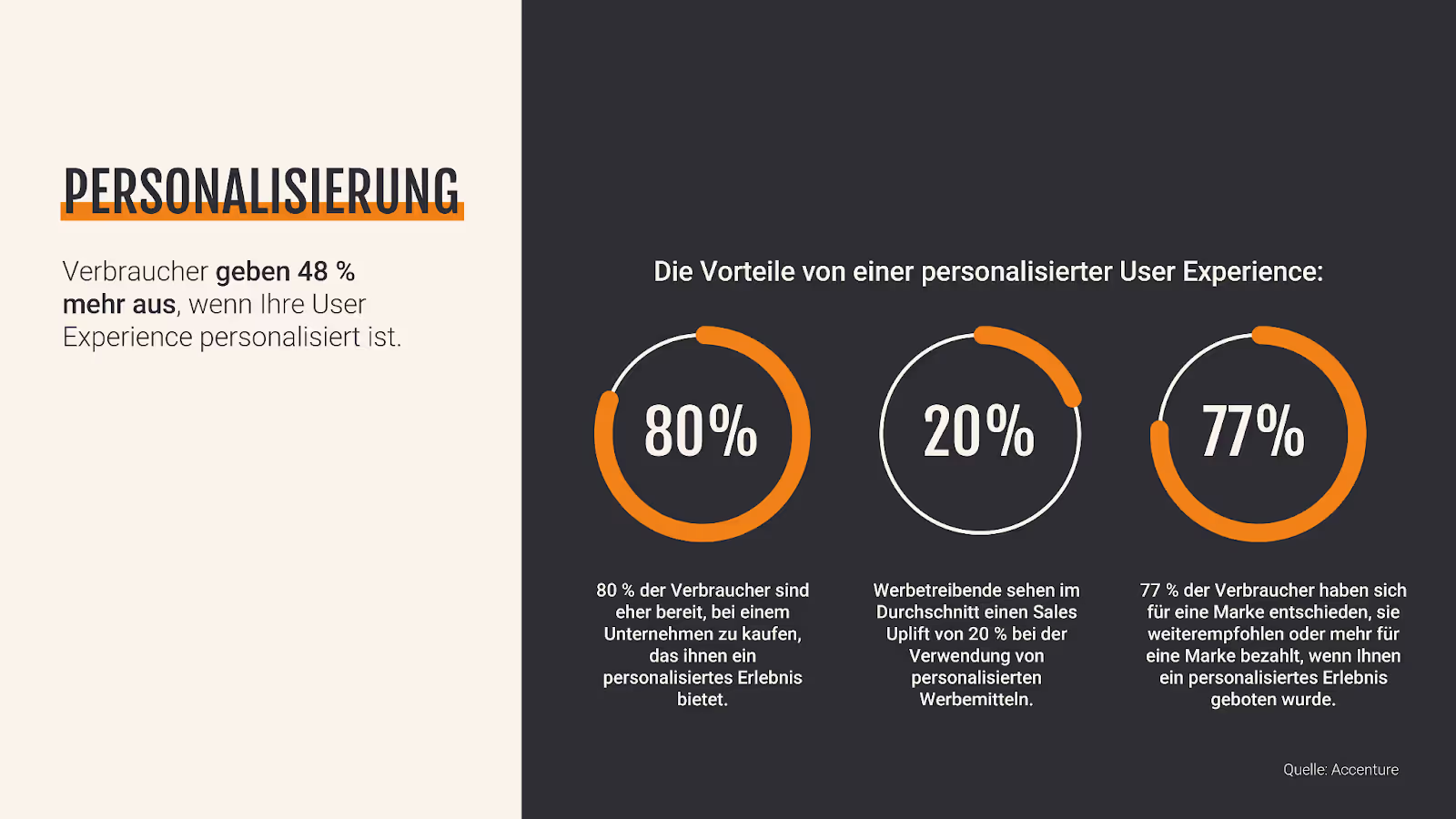Same procedure as every year: The new year has already started and once again offers marketers exciting trends that are currently being hotly discussed in the advertising industry! Whether it's new or new old trends — we've looked at what will be particularly interesting in 2024 and what will remain important. We have filtered out our top 5 most relevant online marketing trends and summarized them for you:
1. If you don't personalize, you lose
As is well known, user interactions with media are no longer linear. News, videos, music, etc. are available at any time. Media consumption is therefore becoming increasingly individual and less collective — and this should also be the case with advertisements. The trend is not new, yet many advertisers are not yet using it. The transition to personalized advertising requires, on the one hand, that companies cluster their heterogeneous target groups into target group personas and reflect on which data sets can help them reach them in a personalized way. It is then necessary to derive a creative concept and a media mix with sufficient advertising pressure to use these data sets efficiently. Once the transformation into a data-driven set-up has been completed, the automated processes and relevant advertising messages will have a positive effect on marketing goals in the future. Many believe that personalizing advertising is made more difficult by the Cookieless Future. However, it is only necessary to find suitable solutions, such as first-party dynamic ads, to enable effective personalization even in this new era of privacy-friendly technologies.

2nd level up: Interactive Ads
Users are showing increased interest in interactive content. Advertisers should therefore think about making advertising messages interactive to increase engagement. It is important to actively engage consumers, for example through surveys, quizzes, and interactive videos. These measures not only increase the length of stay, but also user engagement and brand loyalty at a time when attention spans are declining. Display ads in particular are ideal for interactive advertising formats due to the HTML5 programming options. They enable creative storytelling and convey messages in a compelling and memorable way. Many platforms already use interactive advertising — TikTok, for example, has added “interactive add-ons,” such as voting stickers or superlikes, to its portfolio. Other platforms are also likely to follow suit, as such interactive ads not only offer the opportunity to achieve upper marketing goals such as brand recognition and community building, but also to generate lower marketing goals such as clicks and conversions.
3. Trendy evergreen short clips
Short clips on the web, whether on Instagram Reels, TikTok or YouTube shorts, have been popular for a long time. Through the strong perception of visual stimuli in the human brain, a wide range of information can be conveyed in a very short time. This makes video content a popular trend for advertisers again this year. However, what must be increasingly considered is that the time span to attract the attention of potential customers is steadily declining. For this reason, advertisers should also focus on short-form video ads. It is important to produce the content in the right aspect ratio, namely 16:9. Otherwise, it can be difficult and sometimes even impossible to retrospectively adapt horizontally produced videos for social media, in particular TikTok and Instagram, to the required 16:9 video format.
4. TikTok — new era or ruin?
TikTok has announced that creators will be able to upload videos of up to 30 minutes in length from 2024. However, this raises concerns about monetization and advertising experience. TikTok, known for entertaining entertainment, is planning to introduce Midroll ads. This could either give priority to longer content or cause the platform to lose its identity. The challenge is therefore to deliver attractive advertising opportunities without alienating TikTok's core idea.
5th AI Reloaded
Since last year, when ChatGPT and Co. celebrated their big release, everyone has been talking about generative AI. The potential is generally regarded as positive — particularly in the advertising sector. Here, AI is already being actively used to generate text and images for creatives. AI not only enables faster processes, but also cost-effective benefits. In addition, AI can be effectively used in developing personas and in keyword research, which enables the efficient display of advertising across various platforms for better campaign performance. In general, AI should not only continue to be seen as a trend, but also as an important part of future online marketing. Understanding and adequately evaluating the effectiveness of such generative outputs will become increasingly important not only this year but also over time.
Adlicious always develops tailor-made solutions in order to be able to react flexibly to changing consumer preferences and the associated trends. We are happy to provide individual advice on the trends. Please contact us for this.





